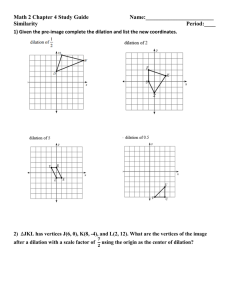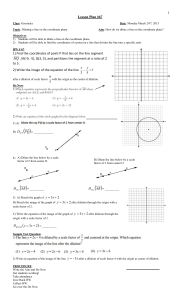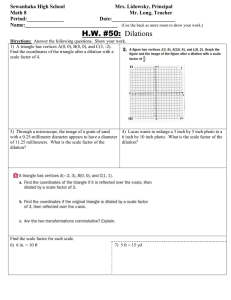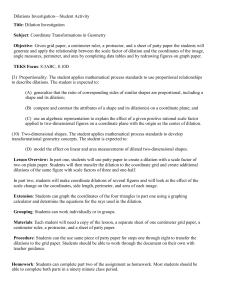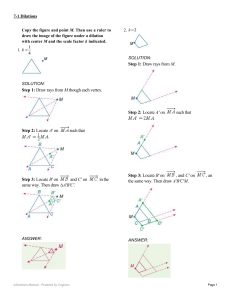Dilations
advertisement
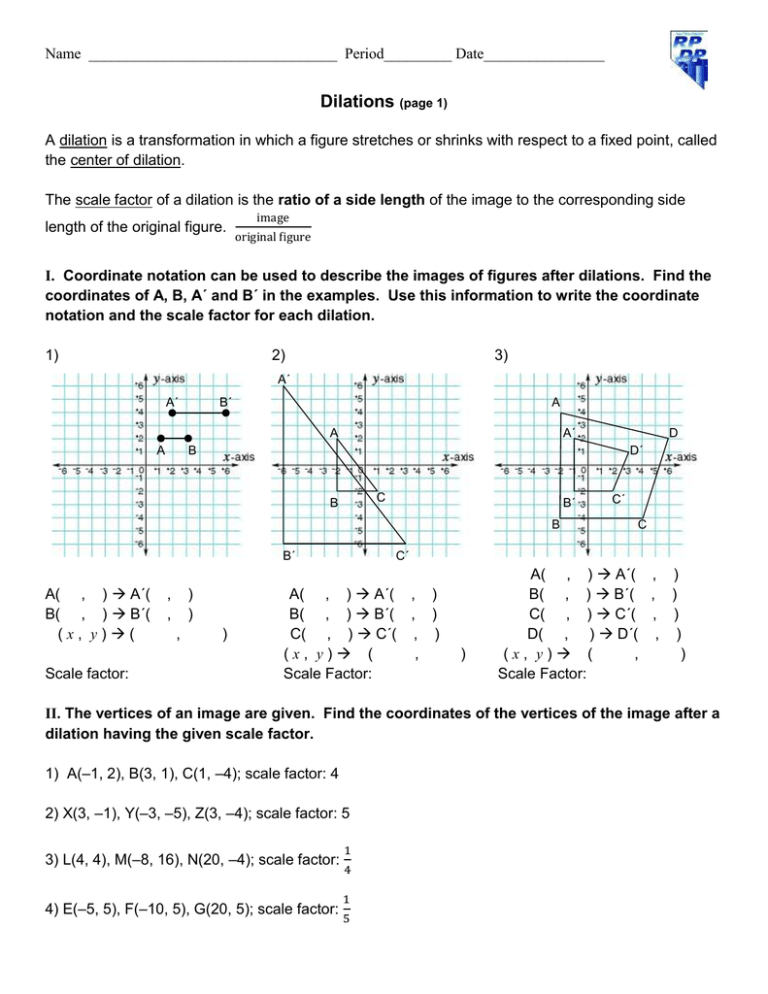
Name _________________________________ Period_________ Date________________ Dilations (page 1) A dilation is a transformation in which a figure stretches or shrinks with respect to a fixed point, called the center of dilation. The scale factor of a dilation is the ratio of a side length of the image to the corresponding side length of the original figure. image original figure I. Coordinate notation can be used to describe the images of figures after dilations. Find the coordinates of A, B, A´ and B´ in the examples. Use this information to write the coordinate notation and the scale factor for each dilation. 1) 2) 3) A´ A´ B´ A A A A´ D´ C B B´ B B´ A( , ) A´( B( , ) B´( (x, y)( Scale factor: D B , , ) ) , ) C´ C C´ A( , ) A´( , ) B( , ) B´( , ) C( , ) C´( , ) (x, y) ( , Scale Factor: ) A( , ) A´( , ) B( , ) B´( , ) C( , ) C´( , ) D( , ) D´( , ) (x, y) ( , ) Scale Factor: II. The vertices of an image are given. Find the coordinates of the vertices of the image after a dilation having the given scale factor. 1) A(–1, 2), B(3, 1), C(1, –4); scale factor: 4 2) X(3, –1), Y(–3, –5), Z(3, –4); scale factor: 5 3) L(4, 4), M(–8, 16), N(20, –4); scale factor: 4) E(–5, 5), F(–10, 5), G(20, 5); scale factor: 1 4 1 5 Dilations (page 2) I. Describe a dilation in two words. II. Complete 2 of the 3 questions in this section. Find the coordinates of the original figure and the image. Use this information to write the coordinate notation and scale factor for the dilation. 1) 2) 3) A A´ D A C´ A´ B´ A A´ B C D´ B´ C´ B B C B´ A( , ) A´( B( , ) B´( (x, y)( , , ) ) , ) Scale Factor: A( , ) A´( B( , ) B´( C( , ) C´( D( , ) D´( (x, y) ( Scale Factor: , ) , ) , ) , ) , ) A( , ) A´( , ) B( , ) B´( , ) C( , ) C´( , ) (x, y) ( , Scale Factor: ) III. Complete 3 of the 4 questions in this section. The vertices of a figure are given. Find the coordinates of the vertices after a dilation having the given scale factor. 1) A(–2, 3), B(2, 1), C(4, –4); scale factor: 12 2) X(1, –3), Y(–3, –1), Z(4, –5); scale factor: 1.5 3) L(100, 40), M(–80, 45), N(20, –30); scale factor: 4) E(–6, 6), F(–18, 36), G(24, 12); scale factor: 1 10 1 6 IV. Explain your reasoning: You dilate △ABC using a scale factor of 1 4 . You then dilate its image using a scale factor of 2. Do you get the same final image if you switch the order of the dilations? Explain.
